What is a Diphthong Anyway?
Diphthongs are a combination of two vowel sounds that glide together within a single syllable. Teaching diphthongs to students can be an exciting and engaging experience that helps improve their pronunciation and reading skills. In this blog post, we will explore effective strategies and activities to teach diphthongs in the classroom.
Introducing Diphthongs
To begin, introduce the concept of diphthongs to students by explaining that they are unique sounds created when two vowel sounds join forces in a single syllable. Provide examples of common diphthongs such as “oi” in “coin” and “ou” in “cloud.” Encourage students to pay attention to the way their mouth moves when pronouncing these sounds.
Visual Aids and Mnemonics
Visual aids and mnemonics can be powerful tools to help students remember the different diphthongs. Create a colorful poster or chart that displays the diphthong sounds along with corresponding images and words. For instance, the diphthong “au” can be represented by a picture of a golden autumn leaf alongside the word “autumn.” This visual representation will help students make connections and reinforce their learning.
I am loving these “Sound Mounds” from The Eppich Classroom. Here is a link so that you can see why: Sound Mounds by The Eppich Classroom
Listening and Repetition
Practice makes perfect when it comes to mastering diphthongs. Provide students with plenty of opportunities to listen to native speakers pronounce diphthongs correctly. You can use audio resources, songs, and videos to expose students to real-life examples of diphthongs. Encourage students to repeat the sounds after listening, focusing on correct pronunciation and intonation.
Word Sorts and Games
Engage students in interactive activities such as word sorts and games. Divide diphthong words into different categories based on the sound they contain. For example, words like “boy” and “oil” would be grouped together under the “oi” category, while words like “loud” and “cloud” would belong to the “ou” category. This activity helps students recognize and differentiate between different diphthong sounds.
You can also incorporate games like bingo or memory matching games where students have to match diphthong words with their corresponding sounds. These games make learning fun and provide opportunities for students to practice their diphthong skills in a relaxed and enjoyable setting.
Reading and Diphthong Hunt
Encourage students to explore literature and texts that contain diphthong words. Provide reading materials where diphthongs are emphasized. For example, choose books, passages, or poems that include words such as “claw,” “toy,” or “cloud.” Instruct students to mark the diphthongs they find while reading, helping them develop a keen ear for spotting diphthong sounds within words. You could go one step further and have the students explain why that word is marked. For example, if a student marked the word “enjoy”, they would have to explain that there is an “oy” in the word and that is a diphthong.
Diphthong Dictionaries
To expand students’ vocabulary and understanding of diphthongs, have them create their own diphthong dictionaries. Provide blank journals or notebooks where students can collect words with diphthongs they encounter in their reading or daily life. If you want an easier prep for your diphthong lesson, you can grab the diphthong dictionary that I made for you here. Encourage them to include the word, its definition, and an example sentence showcasing the diphthong sound. This activity fosters independent learning and helps students take ownership of their diphthong knowledge.
Assessment and Reinforcement
Regular assessments are essential to gauge students’ progress in mastering diphthongs. Conduct periodic quizzes or activities to assess their ability to identify and pronounce various diphthongs correctly. Provide constructive feedback and reinforcement to help students strengthen their diphthong skills further. I am currently using this assessment for dipthongs (it is your favorite price and mine-FREE): FREE Decoding Assessments by Resources by Julia
These are just a few examples of the many diphthongs that exist in the English language:
Best Ways to Teach Diphthongs Effectively
To teach diphthongs effectively, you can use the following strategies:
- Introduce the concept: Start by explaining to your students what diphthongs are and provide examples of common diphthongs, such as “oi” in “coin” or “ou” in “cloud.” Encourage students to pay attention to how their mouth moves when pronouncing these sounds.
- Use visual aids and mnemonics: Create colorful posters or charts that display the different diphthong sounds along with corresponding images and words. For example, you can represent the diphthong “au” with a picture of a golden autumn leaf and the word “autumn.” These visual representations help students make connections and reinforce their learning.
- Practice listening and repetition: Provide students with plenty of opportunities to listen to native speakers pronouncing diphthongs correctly. Use audio resources, songs, and videos to expose students to real-life examples of diphthongs. Encourage students to repeat the sounds after listening, focusing on correct pronunciation and intonation.
- Engage in word sorts and games: Interactive activities like word sorts and games can make learning diphthongs fun and engaging. Divide diphthong words into different categories based on the sound they contain. For example, group words like “boy” and “oil” together under the “oi” category. You can also incorporate games like bingo or memory matching games where students have to match diphthong words with their corresponding sounds.
- Encourage reading and diphthong hunt: Provide reading materials that contain diphthongs emphasized. Choose books, passages, or poems that include words like “said,” “boat,” or “cloud.” Instruct students to mark the diphthongs they find while reading, helping them develop a keen ear for spotting diphthong sounds within words.
- Create diphthong dictionaries: Have students create their own diphthong dictionaries. Provide blank journals or notebooks where students can collect words with diphthongs that they encounter in their reading or daily life. Encourage them to include the word, its definition, and an example sentence showcasing the diphthong sound. This activity fosters independent learning and helps students take ownership of their diphthong knowledge.
- Regular assessment and reinforcement: Conduct periodic quizzes or activities to assess students’ ability to identify and pronounce various diphthongs correctly. Provide constructive feedback and reinforcement to help students strengthen their diphthong skills further.
- By incorporating a variety of strategies such as visual aids, mnemonics, interactive activities, reading exercises, and assessments, you can effectively teach diphthongs to your students. Remember to create a supportive and encouraging environment where students feel confident in their ability to learn and apply these diphthong skills.
Best Ways to Incorporate Interactive Diphthong Games
Here are a few suggestions for interactive diphthong games:
-
- Bingo: Create bingo cards with diphthong words written on them. The caller will say a word, and students have to find and mark the corresponding diphthong on their cards. The first student to get a line or a full card wins. Read till the end of the post to get a free Diphthongs Bingo Game from me!
- Memory Matching Game: Create pairs of cards with diphthong words on one card and their corresponding sounds on another card. Mix up the cards and place them face down on a table. Students take turns flipping two cards over to find a match. If they find a word and its corresponding sound, they keep the pair. The student with the most pairs at the end wins.
- Diphthong Charades: Write down different diphthong words on small pieces of paper and put them into a hat or a bag. Students take turns picking a word and acting it out without speaking. The rest of the class has to guess the word based on the student’s actions.
- Diphthong Relay Race: Divide the class into teams. Place flashcards with diphthong words at one end of the room and an empty basket at the other end for each team. The first student of each team runs to the flashcards, picks one, and runs back to their team to place it in their basket. The next student repeats the process. The team that collects the most correct diphthong words in their basket within a time limit wins.
- Diphthong Board Game: Create a board game where students move their game pieces along a path by correctly pronouncing diphthong words. The board can have spaces with instructions or challenges related to diphthongs. For example, landing on a certain space might require the student to say a word with a specific diphthong. The first player to reach the finish line wins.
Remember to adapt the games to suit the age and proficiency level of your students. These interactive diphthong games not only make learning fun but also provide opportunities for students to practice their diphthong skills in an engaging and memorable way. Plus using their tactile and muscle memory skills is always a win-win!
Online Resources to Find Interactive Diphthong Games
There are several online resources where you can find interactive diphthong games. Here are a few websites that offer diphthong games and activities:
-
- ABCya: ABCya offers a variety of educational games, including diphthong games, for different grade levels. Visit their website and search for “diphthongs” to find games like “Space Rocks” or “Phonics Slider.”
- Turtle Diary: Turtle Diary provides interactive diphthong games and activities for students. They have games like “Diphthong Sorting” and “Diphthong Spelling.”
- Education.com: Education.com offers a variety of diphthong games and worksheets that you can access with a free membership. Search for “diphthong games” to find options like “Diphthong Bingo” and “Diphthong Sorting Game.”
- ESL Games Plus: ESL Games Plus has a collection of diphthong games suitable for English language learners. They offer games like “Diphthong Crossword” and “Diphthong Word Search.”
Remember to review and select games that align with your students’ grade level and learning objectives. These online resources can provide an additional interactive element to your diphthong lessons and make learning engaging for your students.
Tactile Activities to Reinforce Learning of Diphthongs
Incorporating tactile activities can be an effective way to reinforce diphthongs. Here are some ideas (Amazon affiliate links ahead):
-
- Sandpaper Letters: Create sandpaper letters for each diphthong sound. Students can trace their fingers over the sandpaper letters while saying the corresponding diphthong sound aloud. This tactile experience helps reinforce the connection between the sound and the written representation.
- Playdough or Clay: Provide students with playdough or clay and ask them to create the shapes of the diphthong letters. As they mold the clay, students can say the diphthong sound and practice forming the correct mouth position for the sound.
- Texture Cards: Create texture cards for each diphthong sound. Use different materials such as sandpaper, fabric, or felt to represent each diphthong. Students can touch and feel the different textures while saying the corresponding diphthong sound.
- Sensory Bins: Set up a sensory bin with small objects or pictures that represent words with diphthongs. Students can search through the bin, find the objects or pictures, and sort them based on the diphthong sound they hear. This hands-on activity engages multiple senses and reinforces diphthong recognition.
- Letters or Letter Tiles: Provide students with letter tiles or magnetic letters representing the different diphthongs. Students can manipulate the tiles to form words with diphthongs, helping them visually and kinesthetically connect the sounds to the written letters.
- Texture Tracing: Use textured materials such as sandpaper or fabric to create large letters representing the diphthongs. Students can trace their fingers along the textured letters while saying the corresponding diphthong sound.
- Diphthong Puzzles: Create puzzles where students match diphthong words with their corresponding pictures or word parts. Students can feel the puzzle pieces and manipulate them to make matches, reinforcing their understanding of diphthong sounds and their spelling patterns.
Remember to provide ample opportunities for students to engage in hands-on, tactile activities that reinforce diphthongs. These activities not only cater to different learning styles but also enhance students’ understanding and retention of diphthong sounds.
In conclusion, teaching diphthongs to students can be an engaging and enjoyable experience and doesn’t have to be so intimidating. By incorporating a variety of strategies such as visual aids, mnemonics, interactive activities, and reading exercises, you can empower students to master diphthong sounds easily and effectively. Remember to create a supportive and encouraging environment where students feel confident in their ability to learn and apply these diphthong skills.
Have you ever wondered about whether a word is a dipthong or a vowel team? Click here or on the picture below to read another blog post dedicated to finding out the answer to that question.
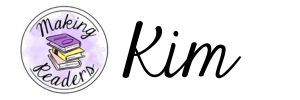






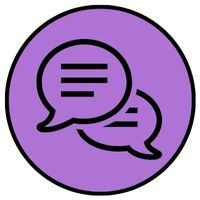
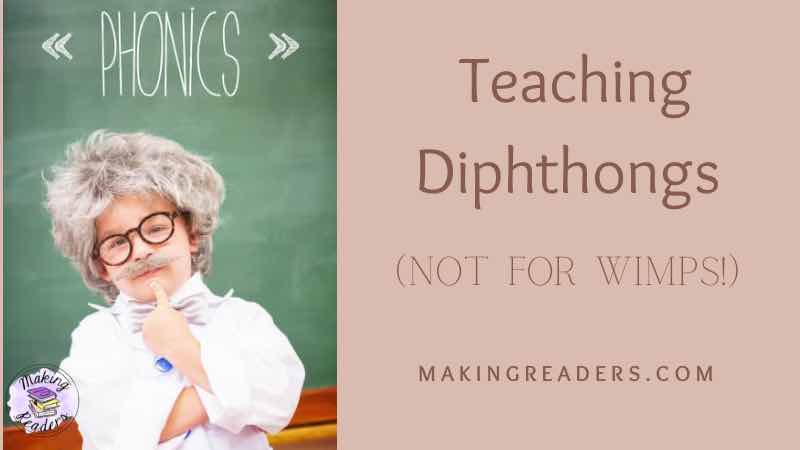
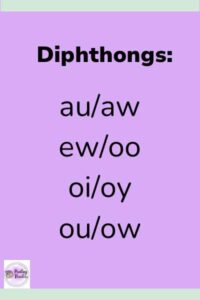
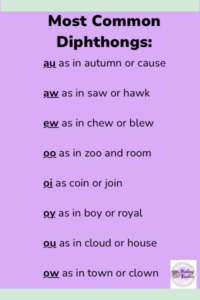



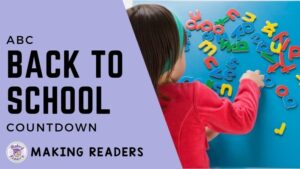

Pingback: Vowel Digraph Or Diphthong? | Making Readers